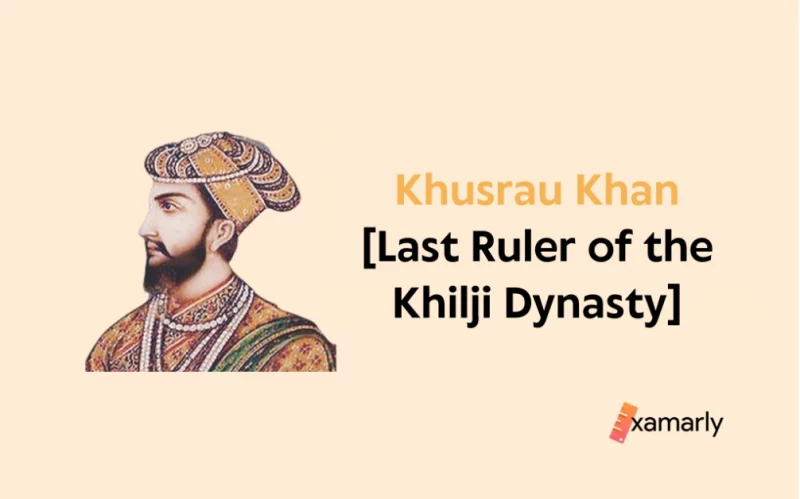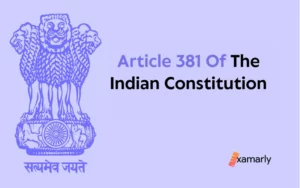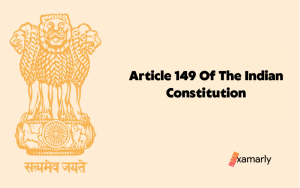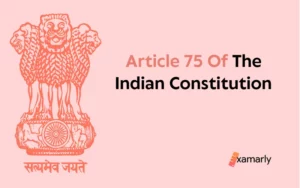The Khilji Dynasty was a powerful one in the history of Delhi Sultanate. They made way to major social reforms, administrative changes, contributions to art & architecture to Indian history.
In this article, we’ll read about Khusrau Khan, the last ruler of the Khilji Dynasty, and the subsequent acquisition of the throne of Delhi by Ghiyas-ud-din Tughlaq which led to the establishment of the Tughlaq Dynasty.
Khusrau Khan
Khusrau was a ruler of the Khilji dynasty in India during the 14th century. He was a nephew of Alauddin Khilji, one of the most powerful rulers in Indian history. Khusrau is known for his brief reign and his rebellion against his cousin and successor, Sultan Qutbuddin Mubarak Shah Khilji.
During his reign, he faced numerous challenges, including a rebellion by his own uncle, Malik Nayak, and an invasion by the Mongols. Despite these obstacles, he was able to maintain his grip on power for a short period of time.
His rebellion against Sultan Qutbuddin Mubarak Shah ultimately led to his downfall. After a series of battles, he was defeated and executed, bringing an end to his short-lived reign. Despite the brevity of his reign, he remains a significant figure in Indian history.
His rebellion against the Khilji dynasty highlights the complex and often tumultuous nature of medieval Indian politics. In addition, his story is a testament to the power struggles and conflicts that defined the period in which he lived. It is estimated that he ruled for about 2 months in 1320.
If you’re interested to read about History, our blog on How to Study History for UPSC will aid in your UPSC Preparation Strategy.
Early Life of Khusrau Khan
Born as Hasan, he was originally from the Gujarat region. He had a uterine brother Husamuddin. Along with his brother, he was captured by the Delhi army during the conquest of Malwa in 1305. The Chronicler of Delhi, Amir Khusrau, states that the two brothers belonged to a Hindu warrior caste or clan known as “Baradu”.
This caste group of Baradu Hindus was known for practicing idol worship. This clan name Baradu has been transliterated differently as Barau, Barvari, or Parvar. But He converted to Islam and became the passive homosexual partner of the Alauddin shah’s son, Mubarak Shah.
The two brothers were taken captive following the invasion of Malwa by Ayn al-Mulk Multani in 1305. They were sent to Delhi as slaves. They were raised by Malik Shadi, the naib-i-khas-i-hajib of Alauddin. There, they pretended to be passive homosexuals in Sultan’s service in order to retain their rank and position.
Alauddin died in 1316. His slave-general Malik Kafur crowned the puppet king Shihabuddin Omar. Soon after, Malik Kafur was assassinated. And then, Mubarak Shah, Shihabuddin’s half-brother, claimed the crown.
Hasan was given the title Khusrau Khan by Mubarak Shah. Khusrau Khan was elevated to the position of vazir within a year. Mubarak Shah named Khusrau Khan’s brother Husamuddin as the governor of Gujarat.
If you’re an aspirant planning to take History as an optional for UPSC, don’t forget to check our following blogs:
Key Points About Khusrau Khan’s Rise to Throne
- He rose among nobles and was promoted to general in 1318 & was tasked with capturing Warangal from the Kakatiya kingdom.
- Qutbuddin Mubarak was overthrown and assassinated in 1320, and Khusrau Khan thereafter took over the sultanate for himself.
- After six months as Sultan, he converted to Hinduism. Ghiyath al-Din Tughlaq rose up in opposition to him and had him executed.
- This way, the Khilji dynasty came to an end and the Tughlaq dynasty was established.
You might also like to read about the Sayyid Dynasty that followed right after the Khiljis.
Khusrau’s Military Career under Mubarak Shah
The military career of Khusrau Khan under Mubarak Shah began in 1317 when he led a successful campaign to reclaim control of Devagiri and the city of Warangal. Mubarak Shah conducted a battle against Devagiri in 1317 after establishing his power in Delhi. This compelled the Yadava king Harapala-deva and his prime minister Raghava to run.
Then Khusrau Khan sent an army under the command of Malik Ikhtiyaruddin Talbagha to hunt down Harapaladeva, who was eventually apprehended and executed.
After Alauddin’s passing, the Kakatiya monarch Prataparudra stopped paying tribute. Mubarak Shah despatched an army in 1318 to besiege Warangal under the command of Khusrau Khan and others. Prataparudra promised to pay tribute on a regular basis in exchange for his surrender.
Also Read: Delhi Sultanate Questions and Answers for UPSC.
The Assassination of Mubarak Shah
The Assassination of Qutbuddin Mubarak Shah is a historic event that occurred in 1320 in Delhi. The main conspirators were Khusrau Khan, his army of Baradu Hindus, and the enemies of Mubarak Shah. Khusrau despised the way the Sultan imposed himself upon him and took advantage of him.
- Although Mubarak’s other subordinates forewarned him about Khusrau’s malicious schemes, Khusrau persuaded him that the accusations were untruthfully defaming him.
- Additionally, he persuaded Mubarak Shah to grant him permission to assemble an army of Baradu Hindus by claiming that every other noble (malik) had their own tribes of supporters.
- Then, Khusrau enlisted the aid of officers who hated Sultan Mubarak Shah in a plot to assassinate him in the palace. He asked the Sultan for permission to have them enter the palace and accompany him. The Sultan complied, and as a result, 300–400 Baradus began to enter the palace each night.
- On the night of the 9th of July, a group of Baradu army led by Khasrau’s maternal uncle Randhol entered the palace and attacked the king’s guards and officers. Meanwhile, Khusrau stayed with the Sultan, in order to distract him.
- Although on the top floor, the Sultan heard the ruckus generated by the murders downstairs. Khusrau informed him that the royal horses had escaped and that the disturbance was the result of the guards attempting to capture them.
- Other Baradus invaded the upper level in the meantime and killed Ibrahim and Ishaq, the special guards for the Sultan. The Sultan attempted to flee to his harem, which was situated a level above, after realizing that a rebellion was taking place against him. Khusrau stopped him by grabbing his hair.
- Jaharya, the Baradu leader, attacked the Sultan with an axe, lifted him by the hair, and flung him to the ground. The Sultan was subsequently executed by being decapitated. The head was afterward thrown into the ground-floor courtyard. The Baradu then went into the royal harem to weed out anyone who could be claiming the throne.
- They demanded the appearance of Alauddin’s other sons, saying they intended to choose one of the princes as king and the others as administrators of the several provinces. The princes Farid Khan and Abu Bakr Khan to offer were killed. They also murdered Jhatyapali, the mother of Mubarak Shah.
Read more about the Delhi Sultanate in our blogs on:
Accession of Khusrau Khan
After killing Mubarak Shah, Khusrau Khan ascended the throne and proclaimed himself with the regal name of Nasiruddin. Khusrau Khan asked the nobility for forgiveness after killing Mubarak Shah.
Thus, he was crowned king with their entire support. His new name was Nasiruddin Khusrau Shah.
Also read about the founder of the Khilji Dynasty: Jalaluddin Khilji.
Administration under Khusrau Khan
- Khusrau ruled for a very short time & this period was filled with instability and uprisings. He tried to keep those loyal to him happy by giving them ample wealth and a good courtly position. Husamuddin, his younger brother, was awarded the title Khan-i-Khanan.
- His uncle Khanan Randhol received the title Rai Rayan as well as Qazi Ziyauddin’s estate and fortune. The top positions in the Baradu contingent were awarded to two other uncles. Jaharya, Mubarak’s killer, received pearls and jewels.
- Due to their illiteracy, it appears that the Baradus were not given any key positions in Khusrau Khan’s administration. However, a number of them seem to have received honors, financial gifts, and military commands in return.
You might also like to read about: Delhi Sultanate Administration.
Religion
- Many sources are of the opinion that the murder of Mubarak Shah resulted in a fight between Muslims and Hindus. The Baradus and other Hindus began practicing idol worship in the palace five to six days after Khusrau Khan ascended to the throne.
- The previous Muslim aristocrats’ homes, as well as the ladies and slave girls who lived there, were taken under the supervision of the Baradus. The Hindus celebrated Khusrau Khan’s victory in order to demoralize Muslims and restore Delhi’s Hindu majority.
- Numerous Muslim lords were also offended by Khusrau’s ban on cow slaughter, and after just four months they switched their allegiance to Ghiyath al-Din Tughluq, a well-liked and seasoned commander who had successfully repelled a number of Mongol incursions in Punjab.
If you need help with reading The Hindu newspaper for UPSC point of view, our following blogs will be super helpful for you:
The Overthrowing of Khusrau Khan
Khusrau was viewed as a threat to the Muslim rule of India. Ghazi Malik (Tughlaq) served as the chief of Khusrau’s enemies. He along with his son Juna Khan brought in other provincial governors and assembled a huge army for this cause.
With Ghazi Malik approaching, Khusrau had to leave the city to meet this challenge. Ain-ul-Mulk and other Muslim nobles turned against Khusrau and withdrew their forces from the war. Despite his valiant efforts, Khusrau Shah was murdered on September 5, A.D. 1320.
Summary
Although his reign lasted for only a few months, he left an impact on the progression of the Delhi Sultanate. After him, we see the beginning of the Tughlaq dynasty with Ghiyath al-Din Tughlaq taking up the throne.
You might also like to read about the Lodi Dynasty that came after the Tughlaq & the Sayyid Dynasties.
FAQs About Khusrau Khan
Who was Khusrau Khan?
Khusrau Khan was a ruler of the Khilji dynasty in India during the 14th century. He was a nephew of Alauddin Khilji, one of the most powerful rulers in Indian history.
What was Khusrau Khan known for?
Khusrau Khan is known for his brief reign and his rebellion against his cousin and successor, Sultan Qutbuddin Mubarak Shah Khilji.
What challenges did Khusrau Khan face during his reign?
During his reign, Khusrau Khan faced numerous challenges, including a rebellion by his own uncle, Malik Nayak, and an invasion by the Mongols.
What led to Khusrau Khan’s downfall?
Khusrau Khan’s rebellion against Sultan Qutbuddin Mubarak Shah Khilji ultimately led to his downfall. After a series of battles, Khusrau Khan was defeated and executed.
Why is Khusrau Khan significant in Indian history?
Despite the brevity of his reign, Khusrau Khan remains a significant figure in Indian history. His rebellion against the Khilji dynasty highlights the complex and often tumultuous nature of medieval Indian politics. In addition, Khusrau Khan’s story is a testament to the power struggles and conflicts that defined the period in which he lived.






